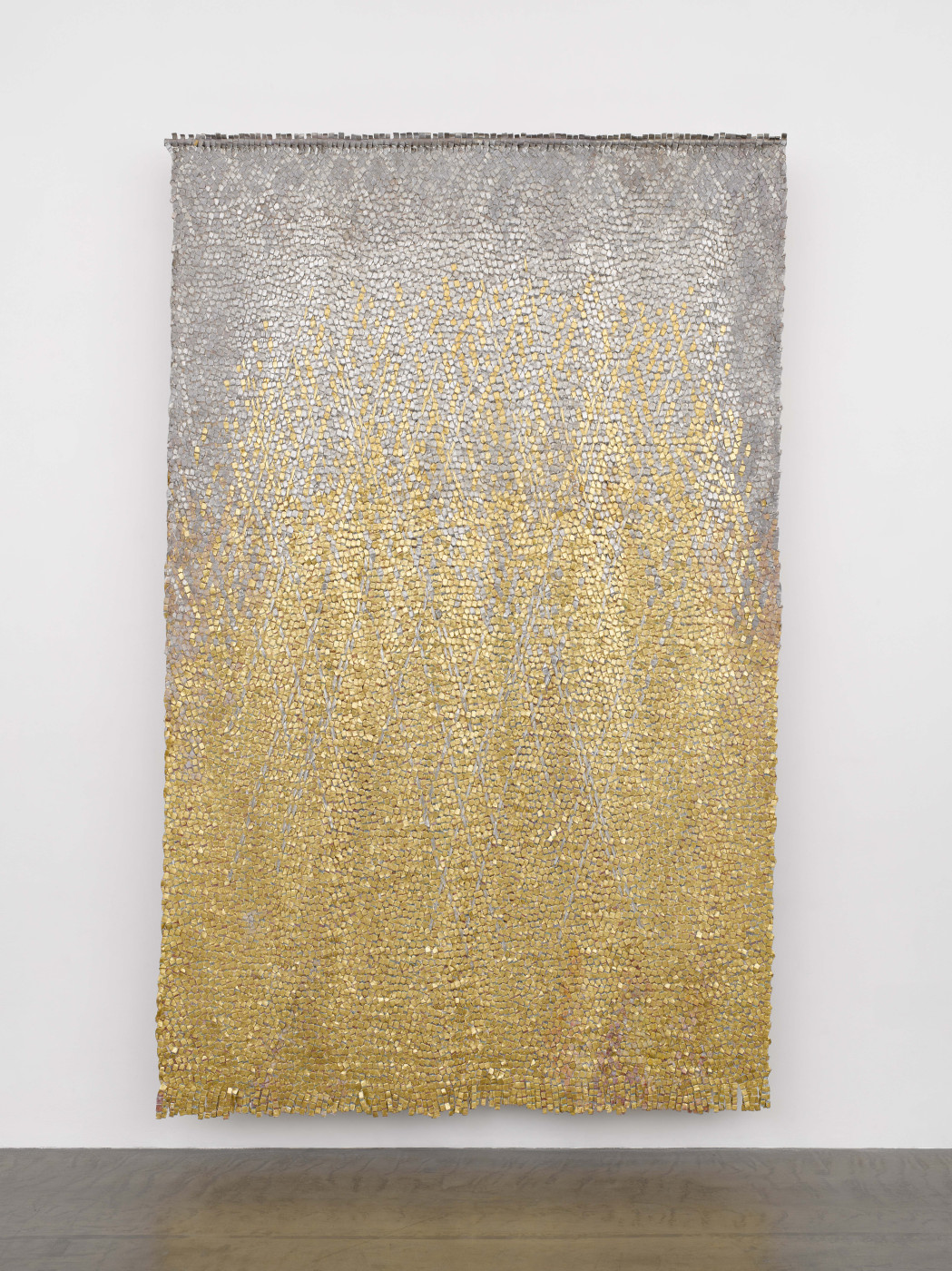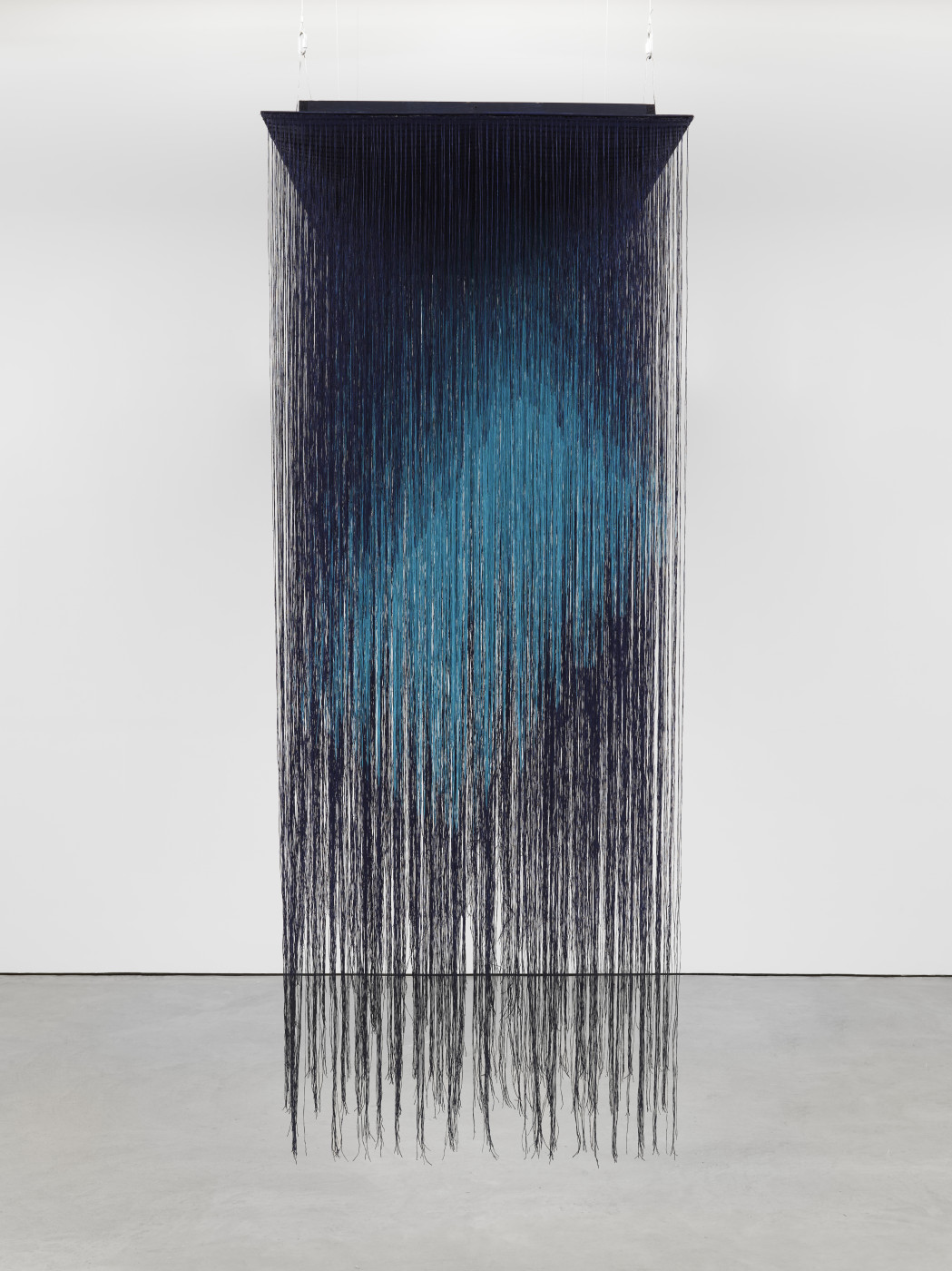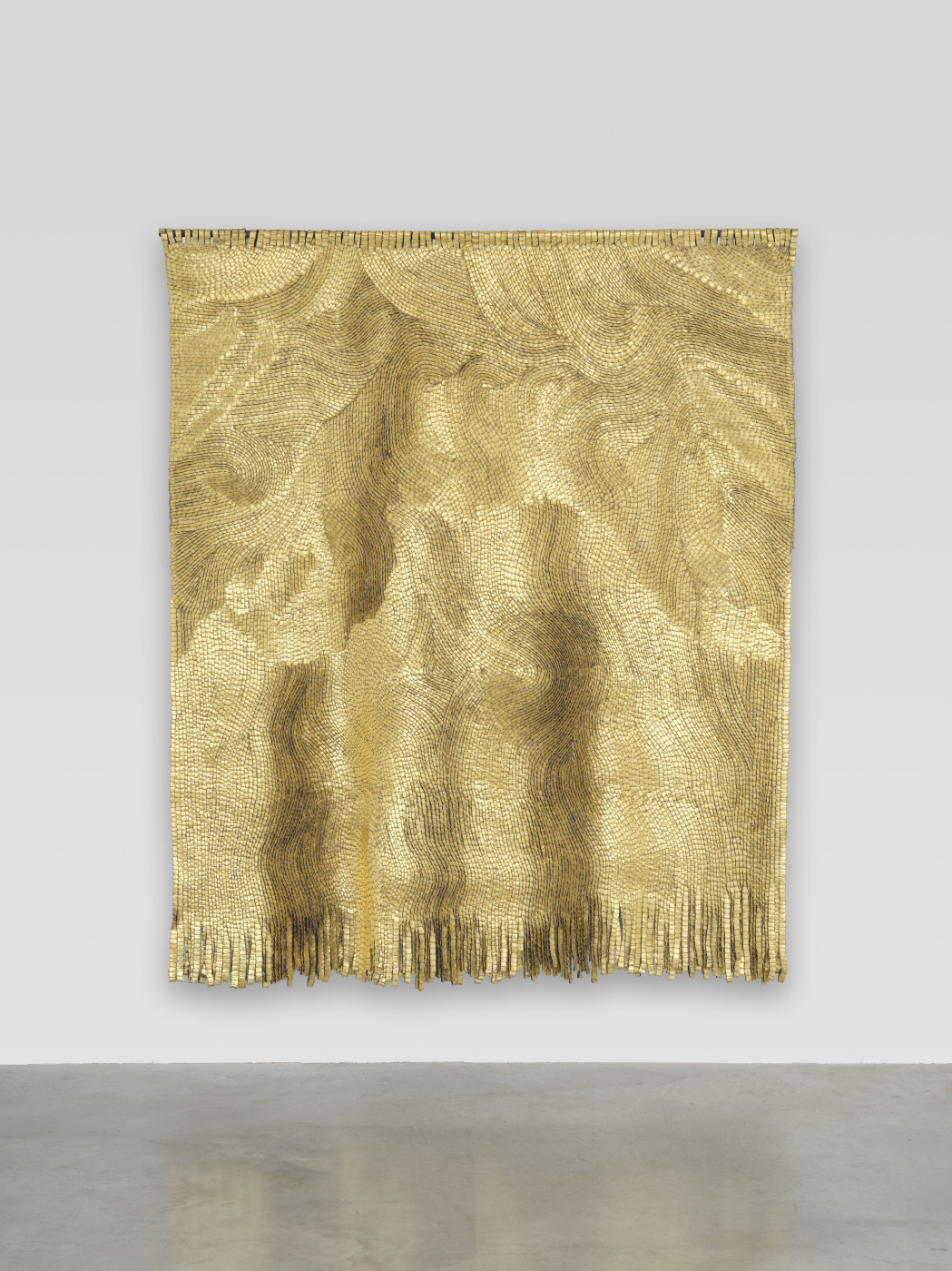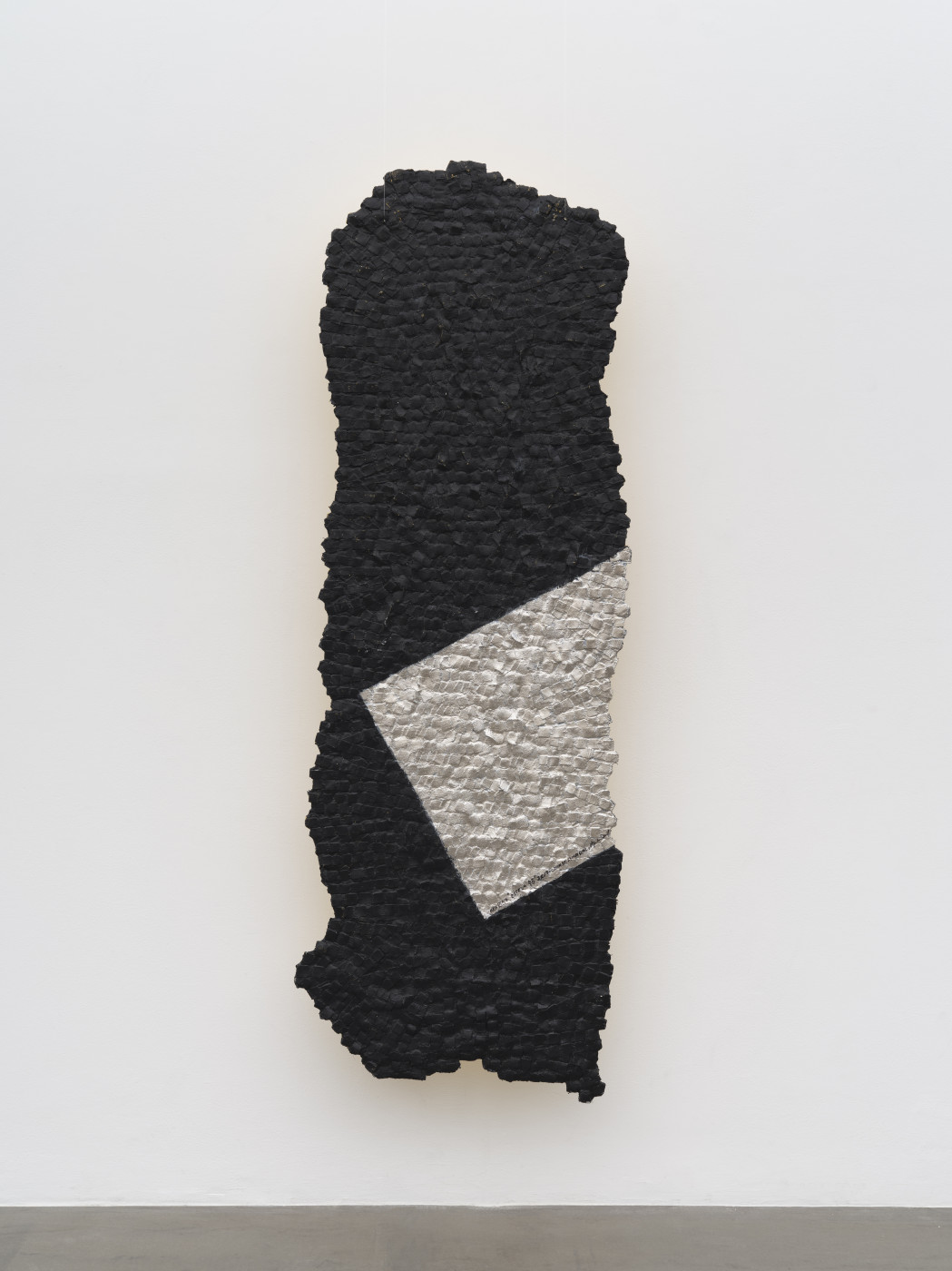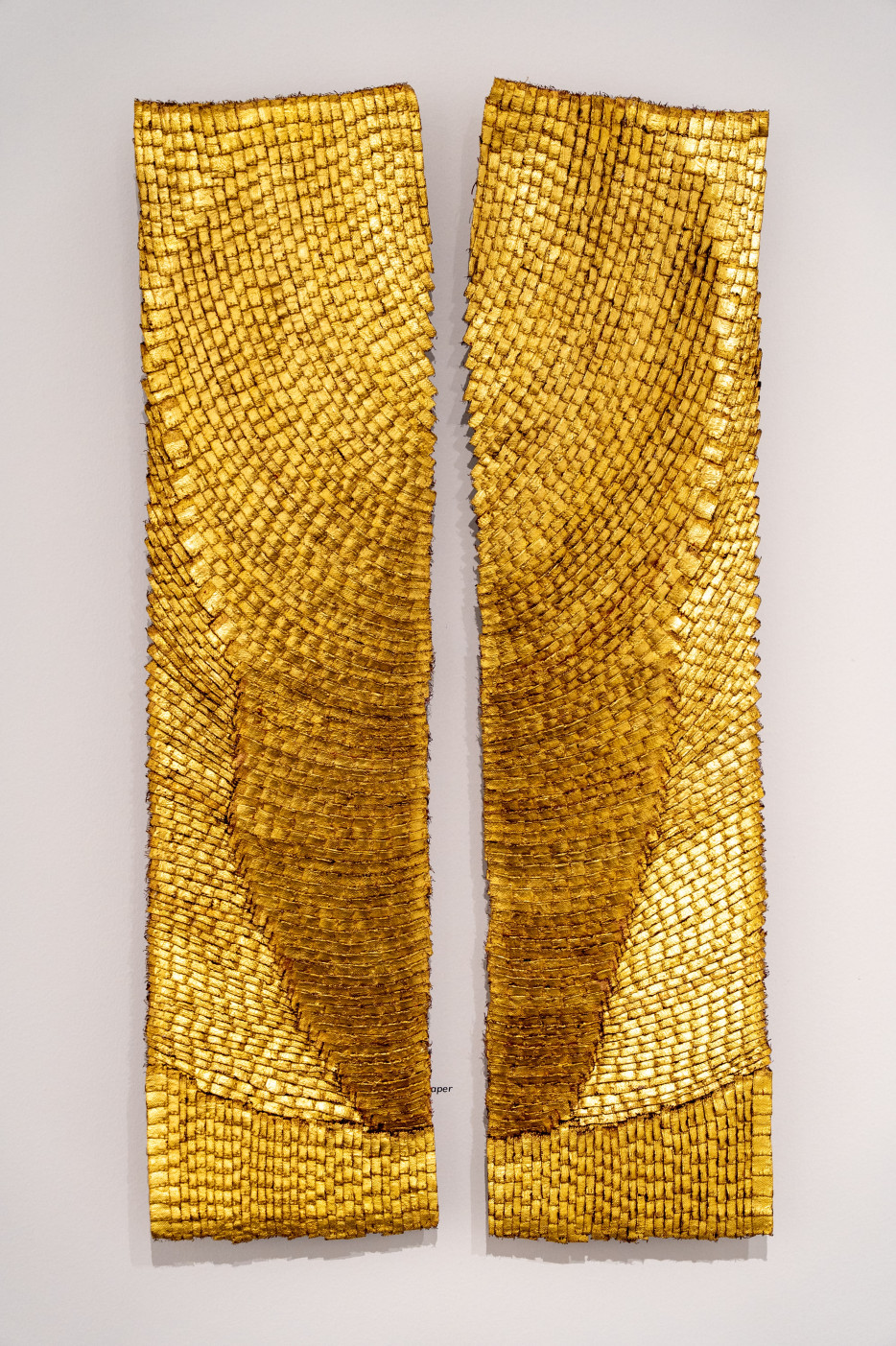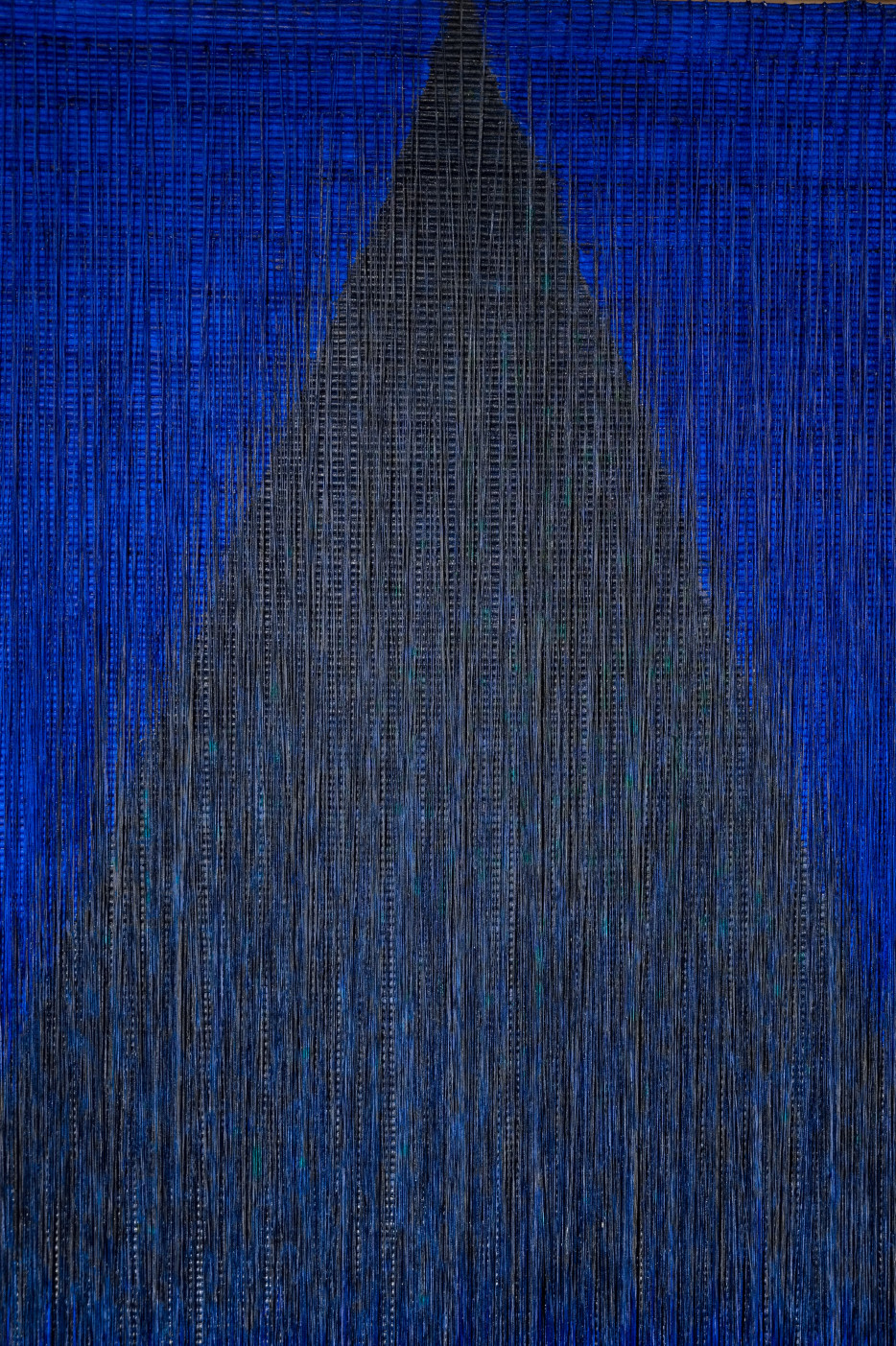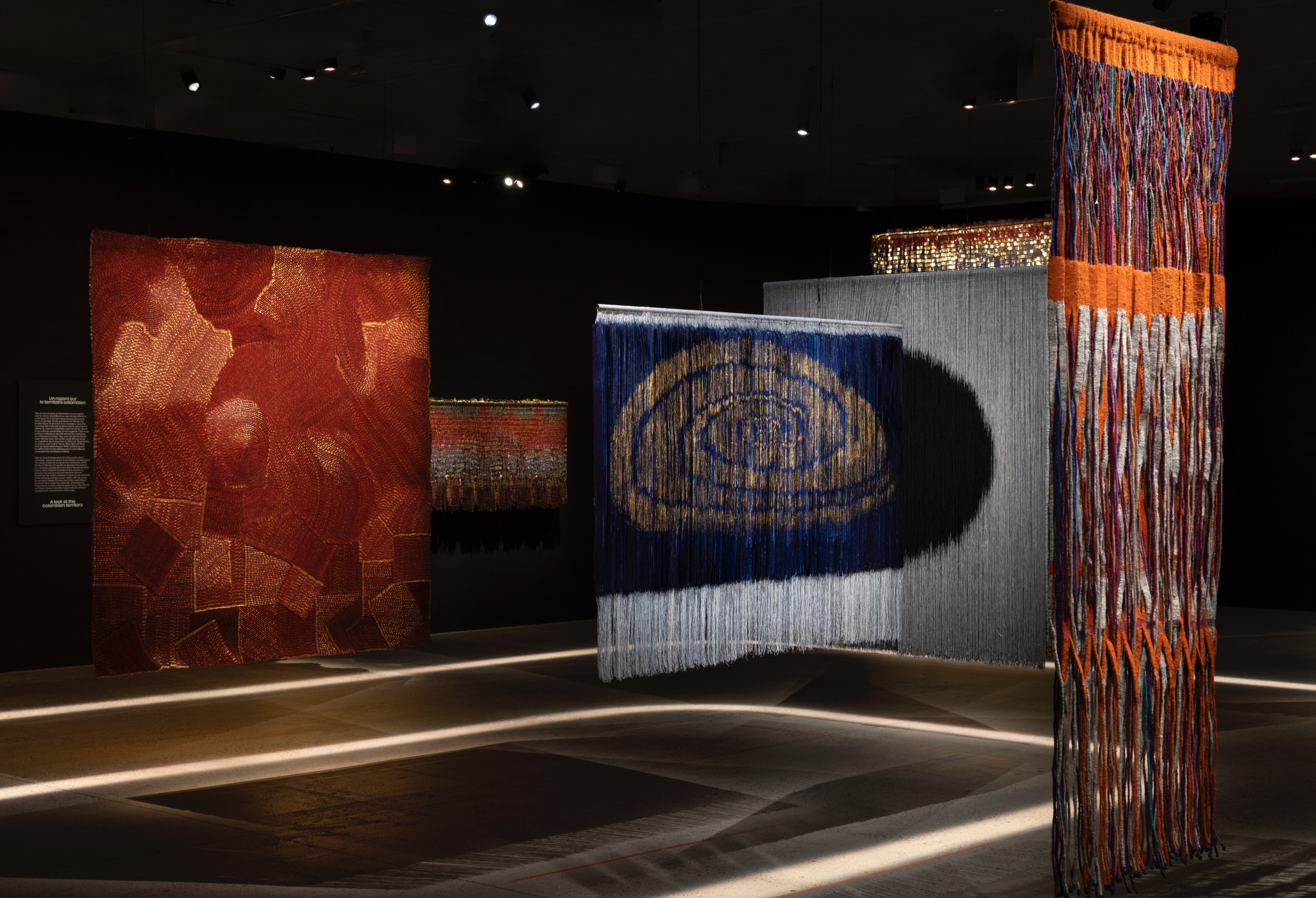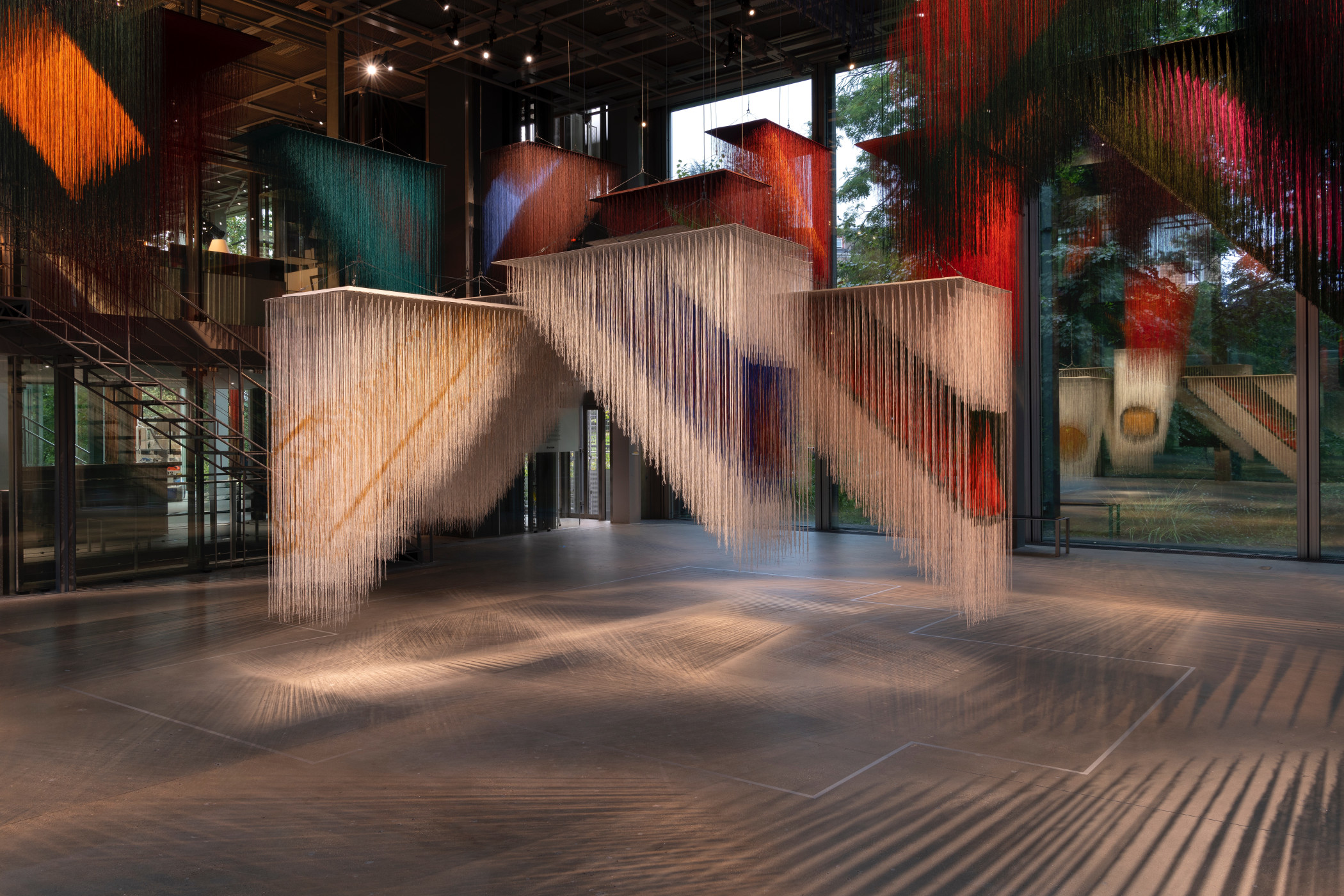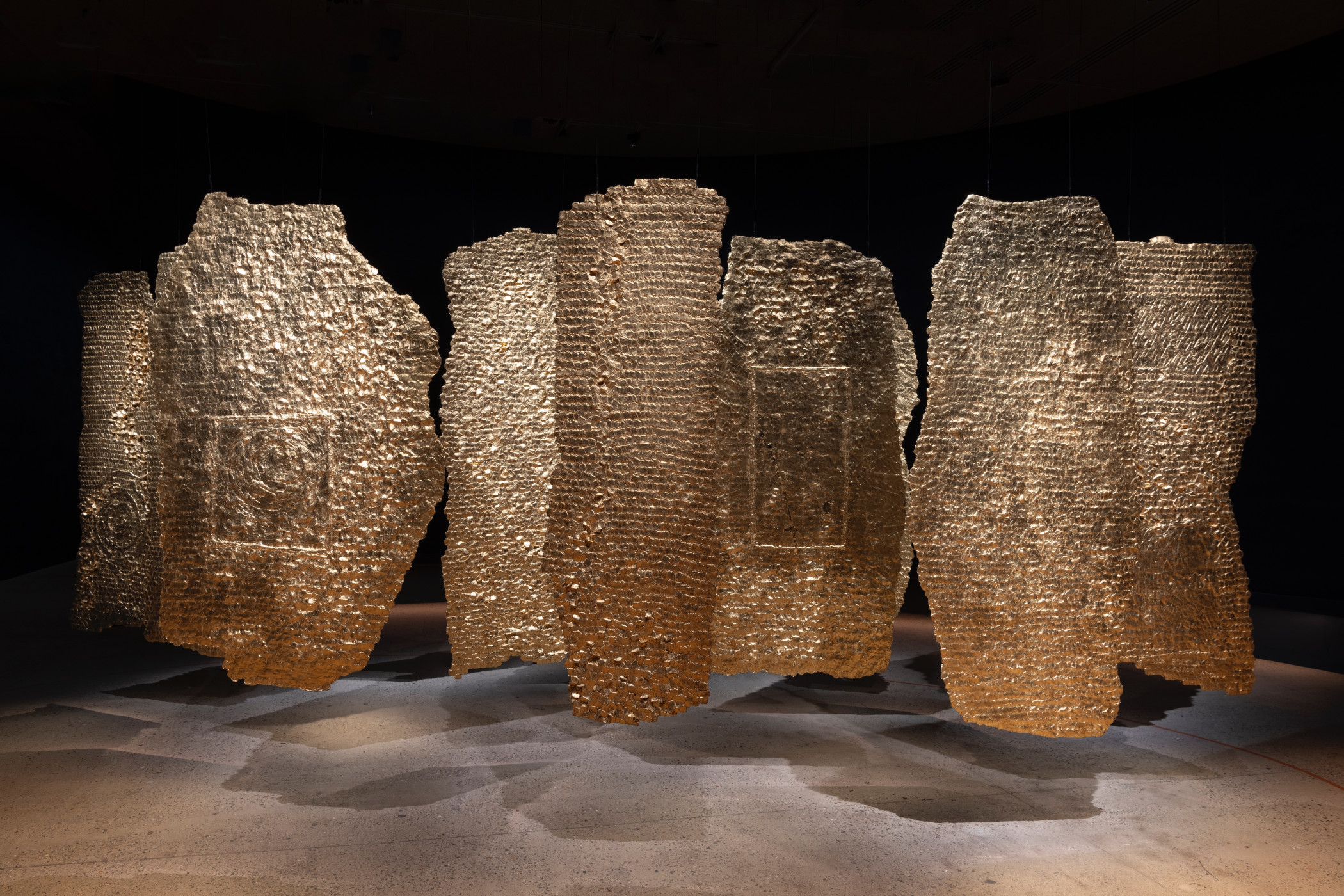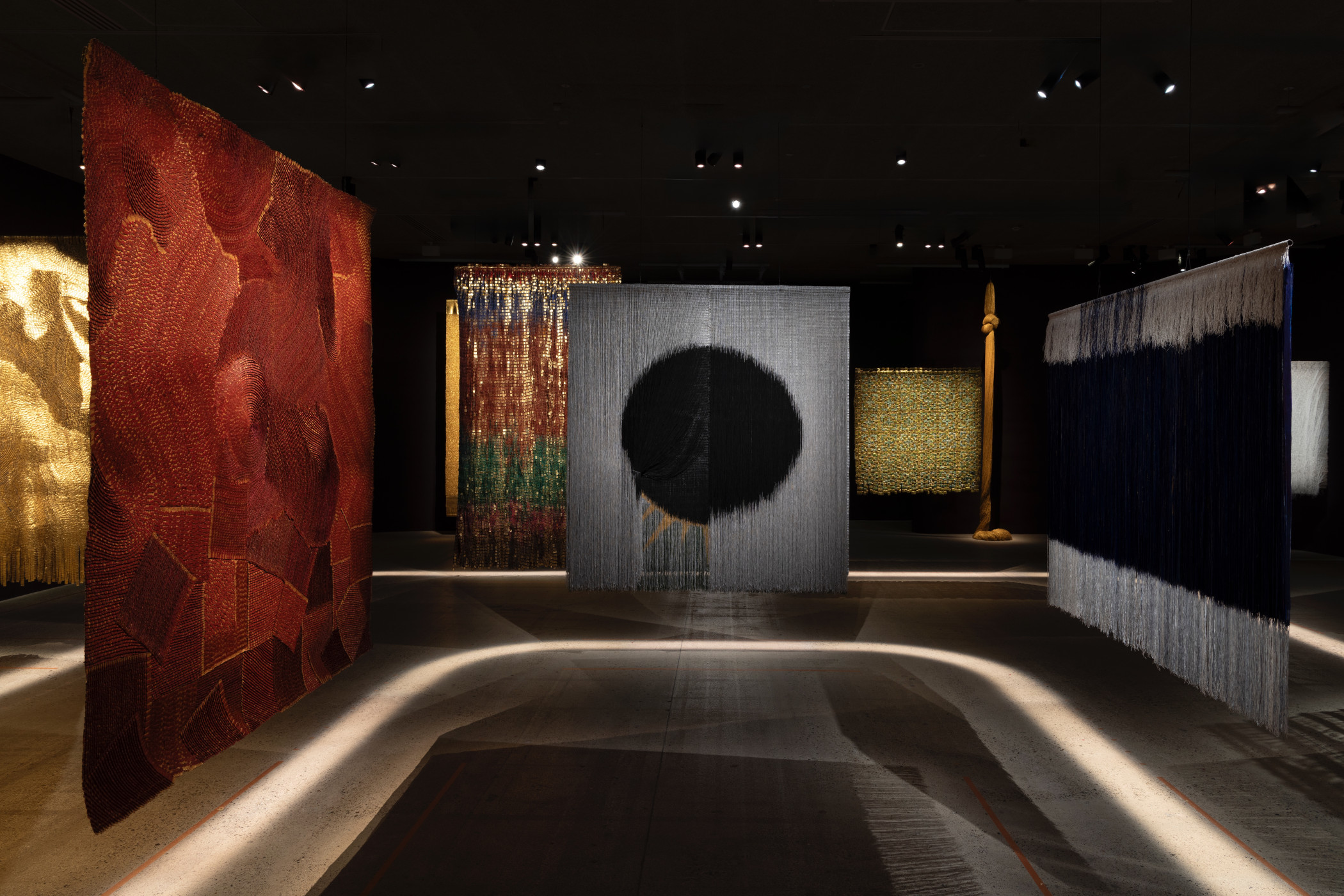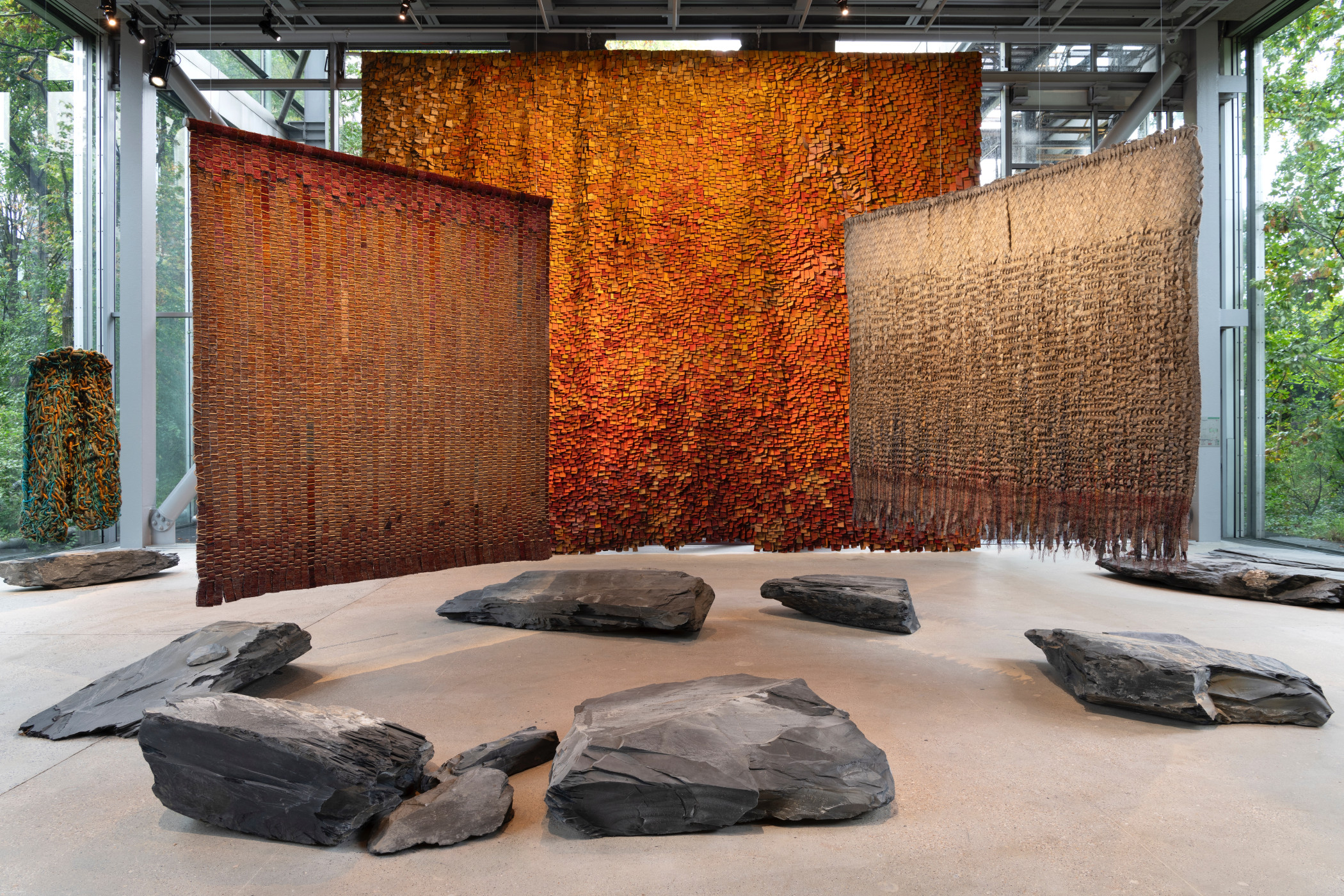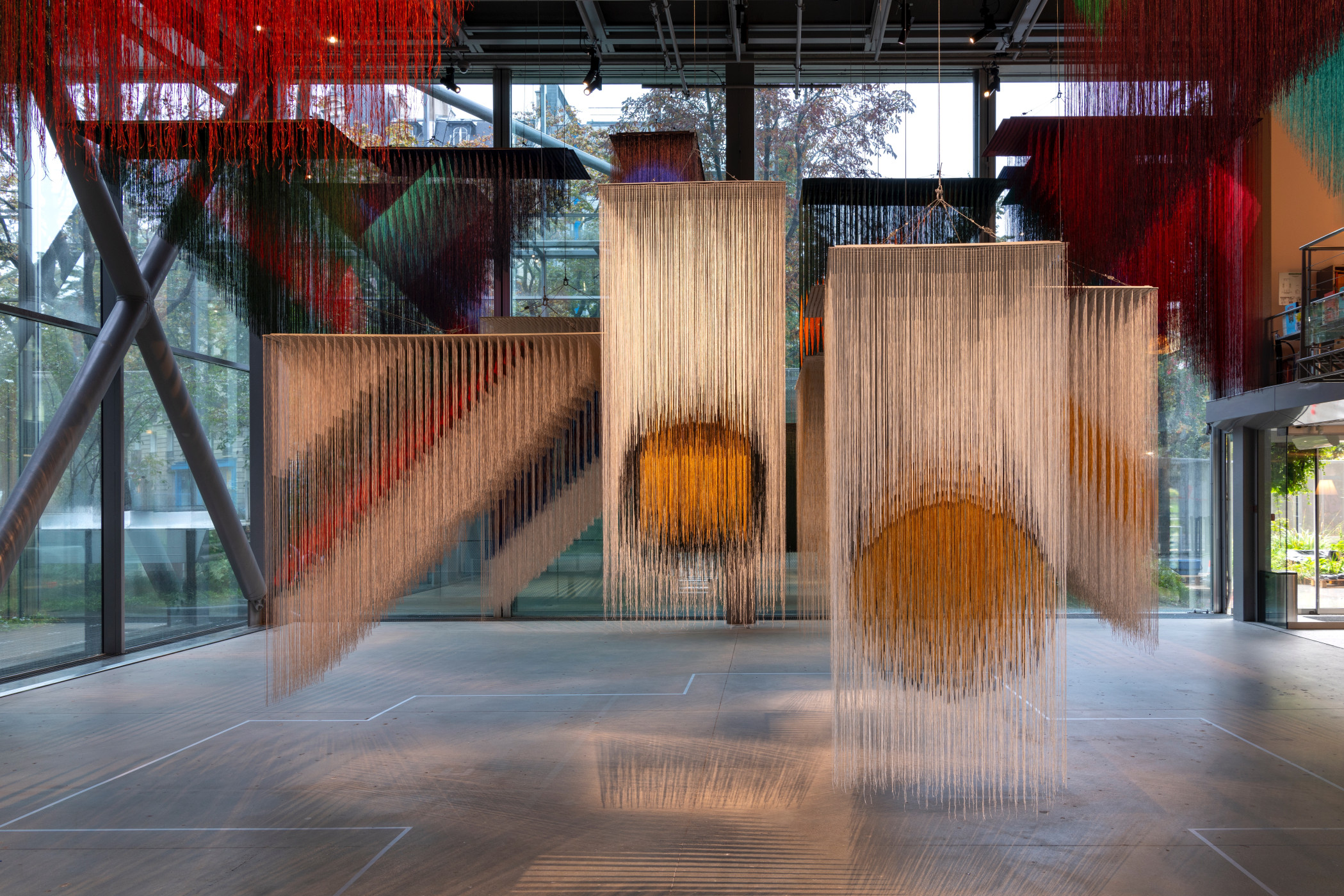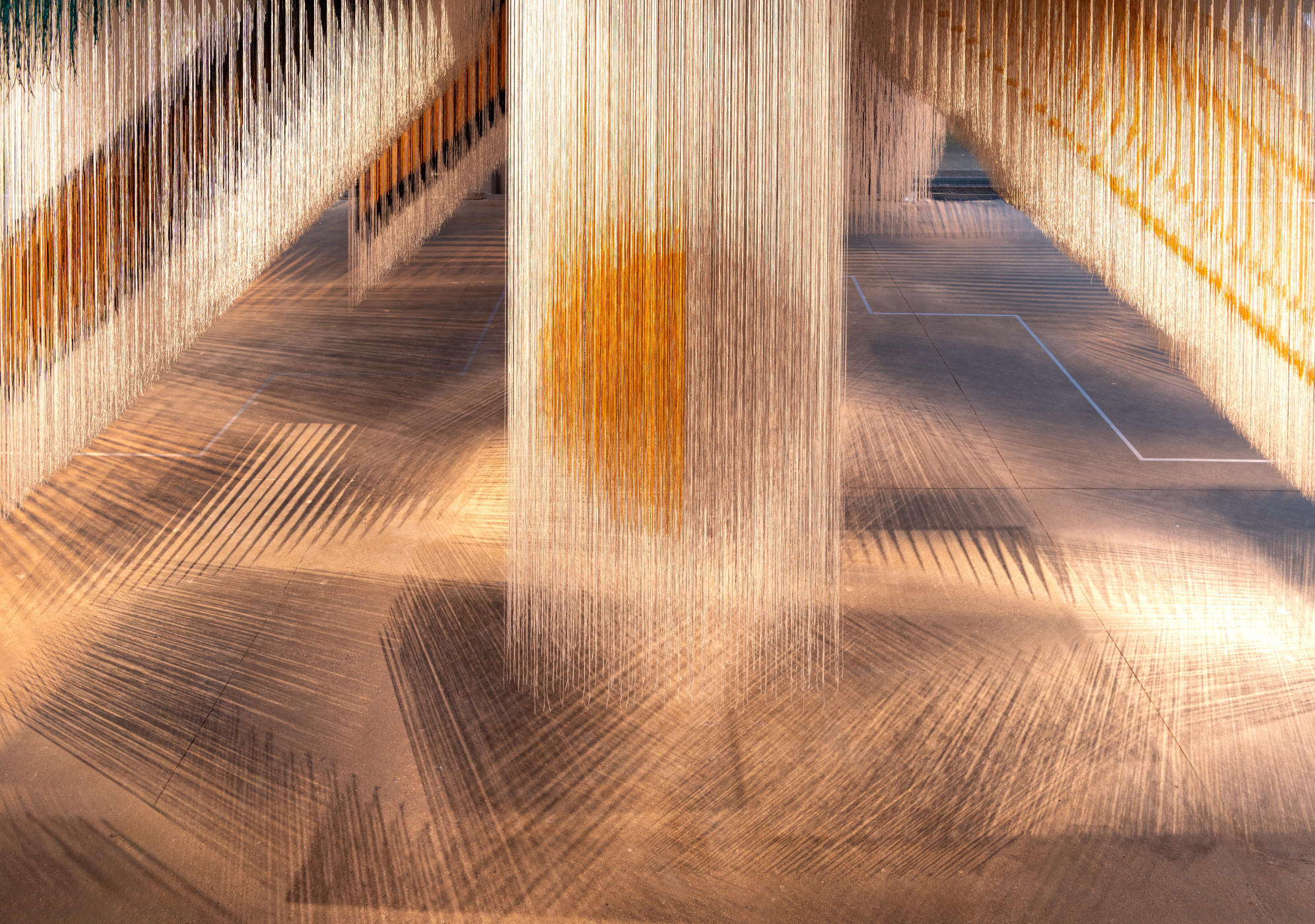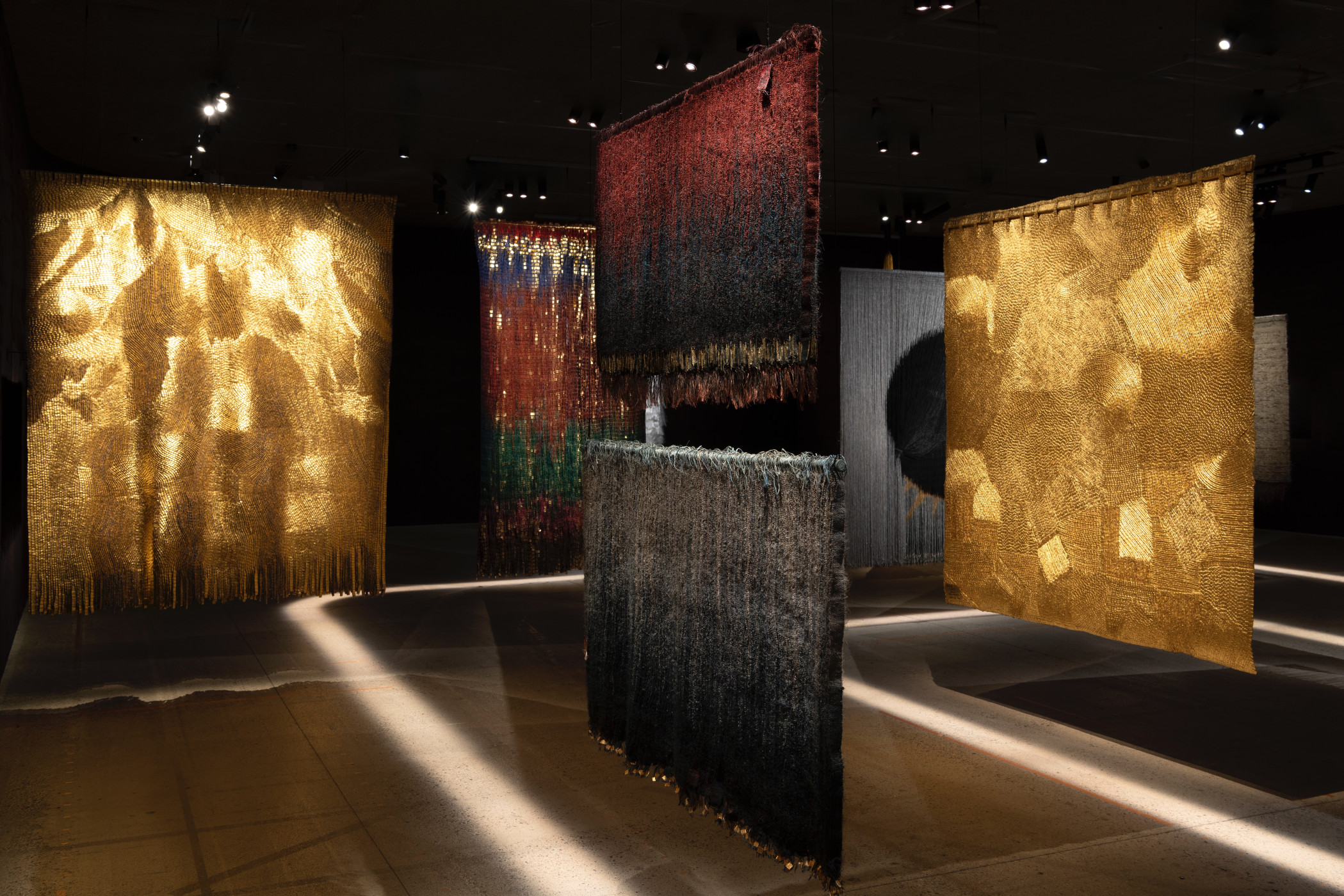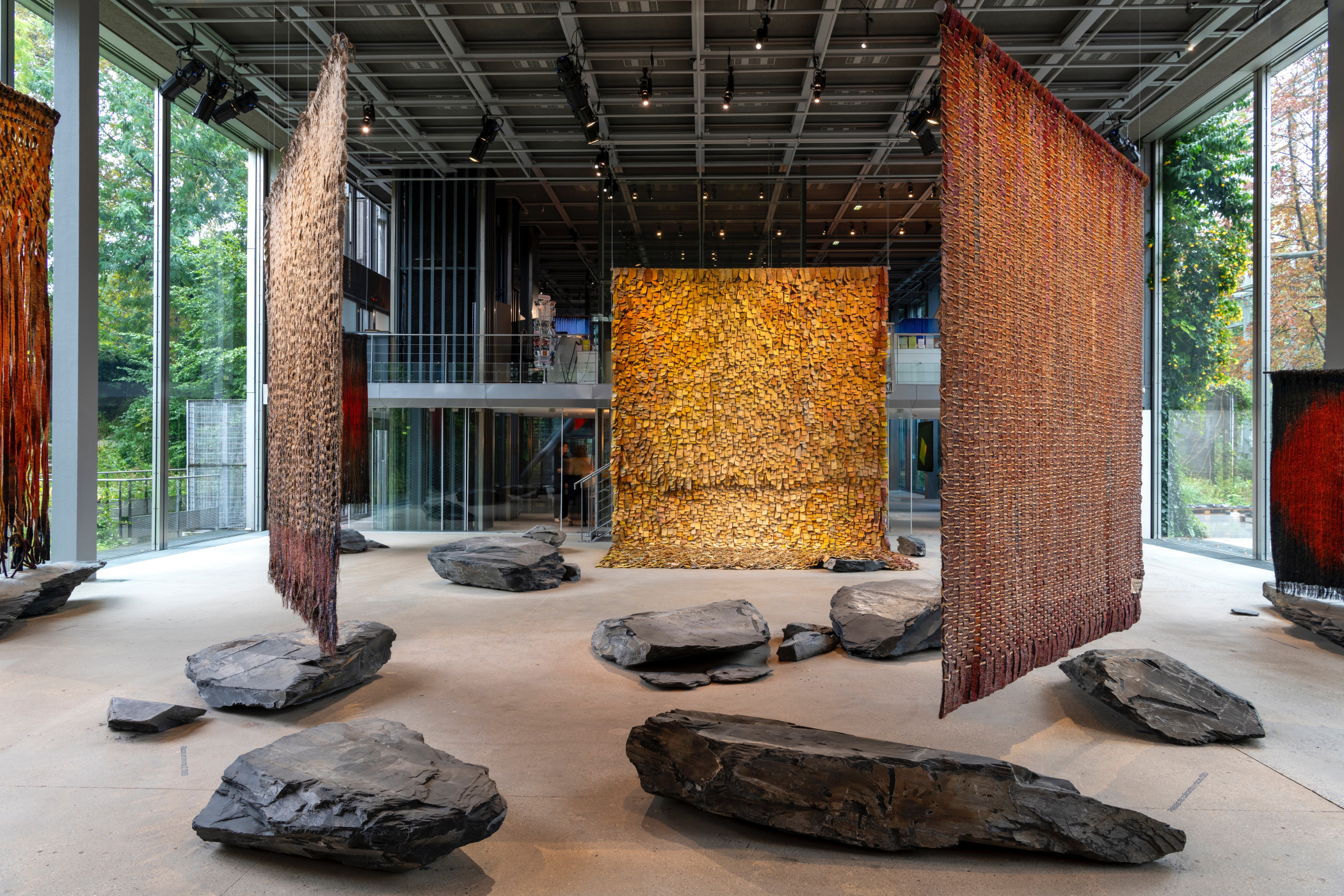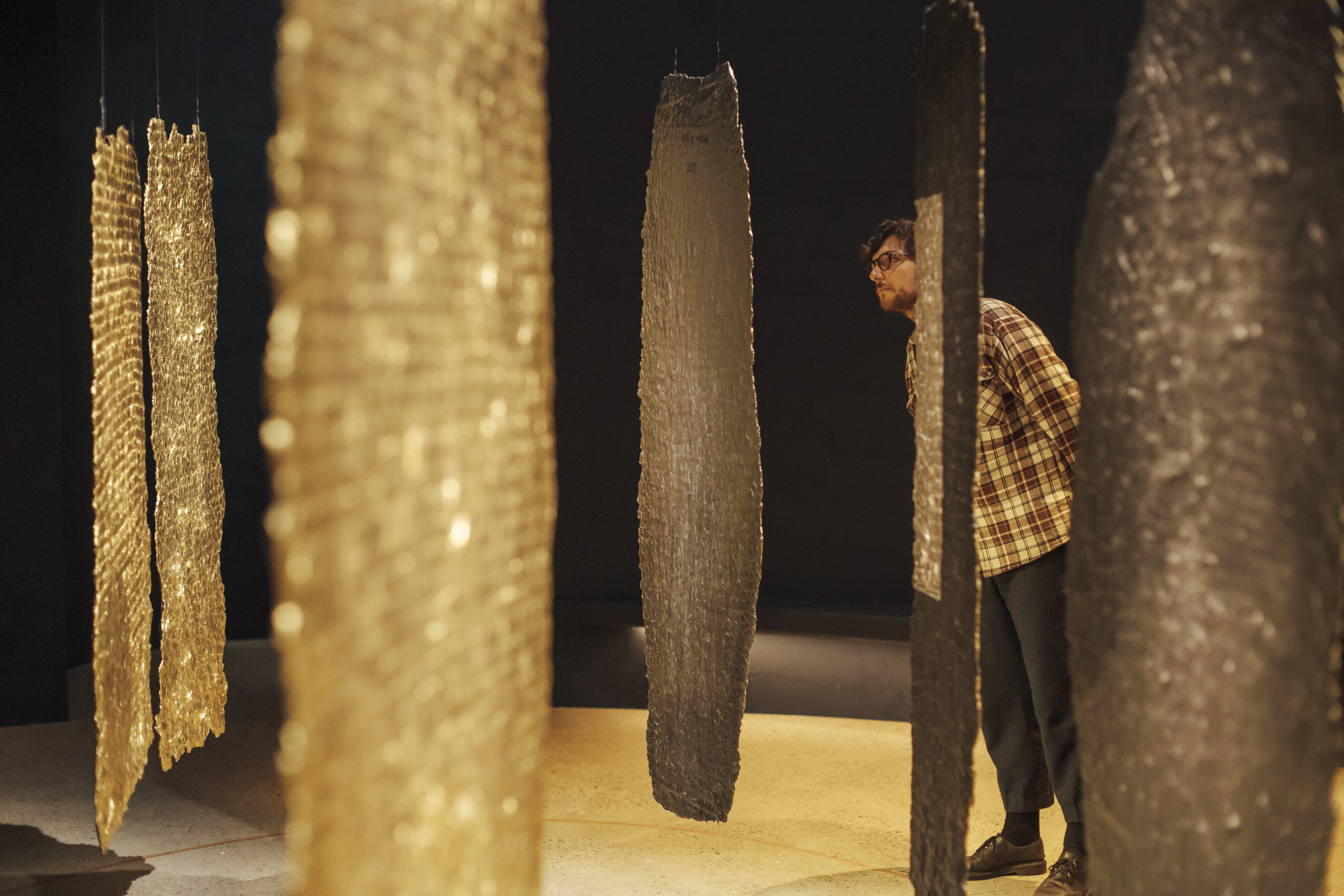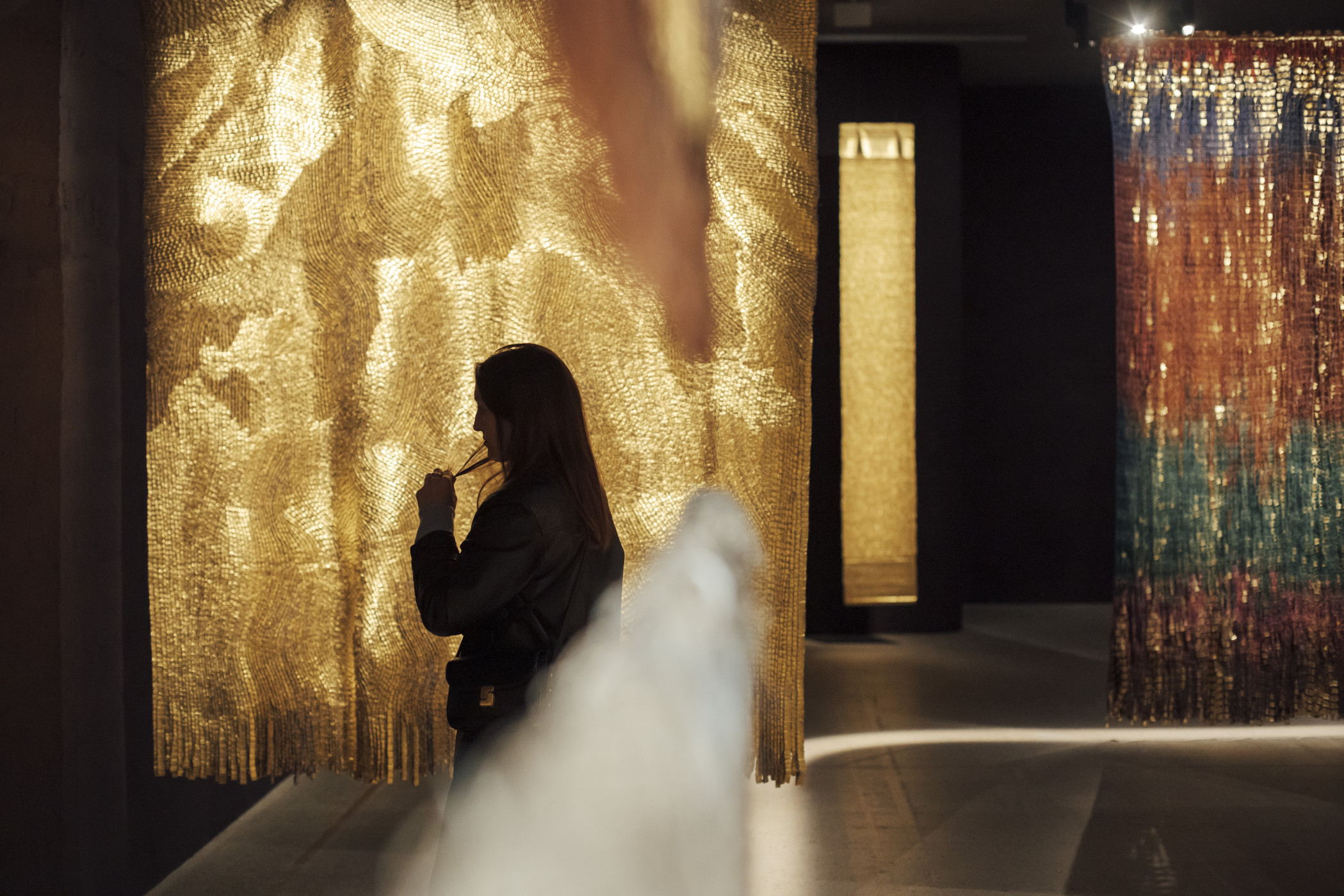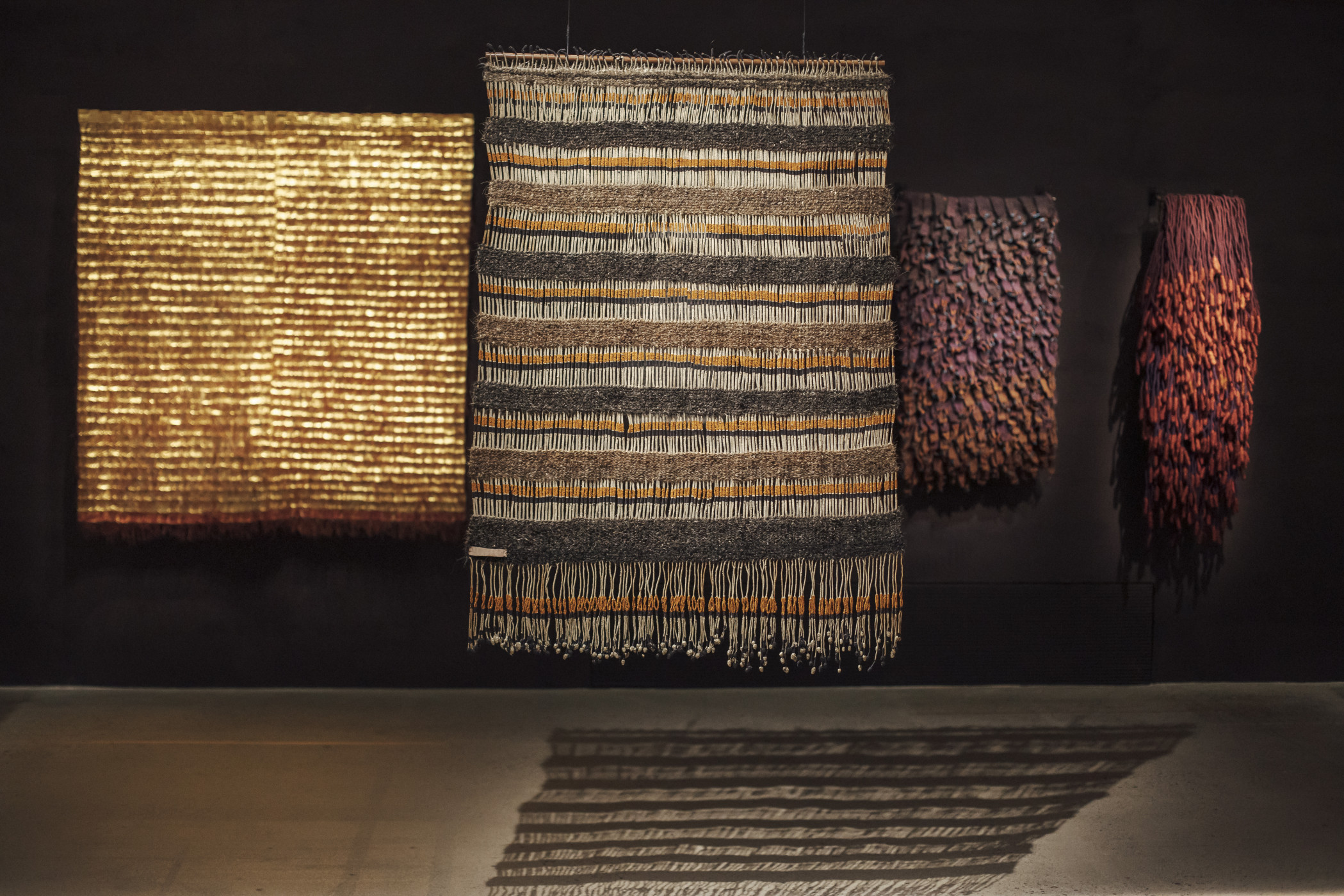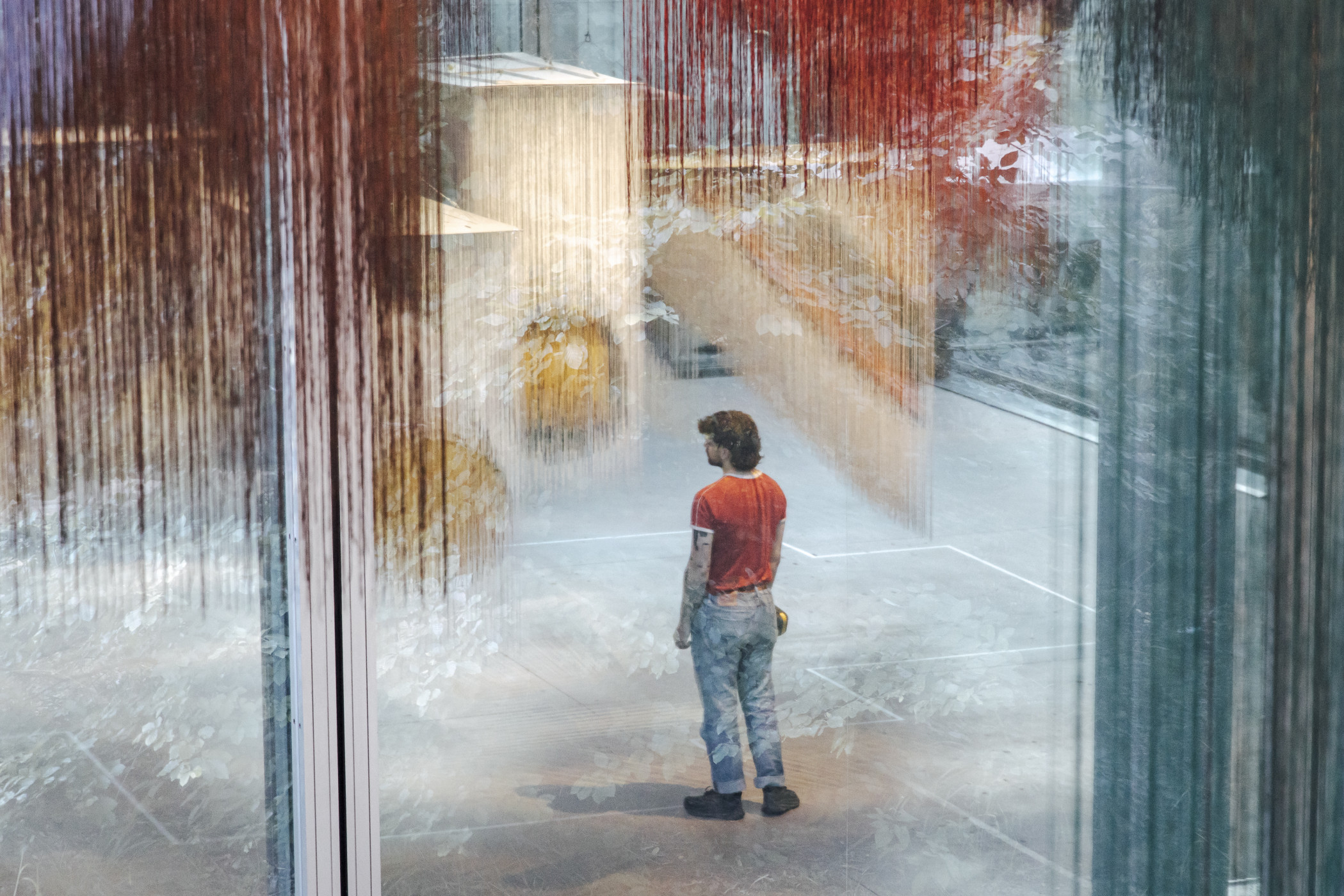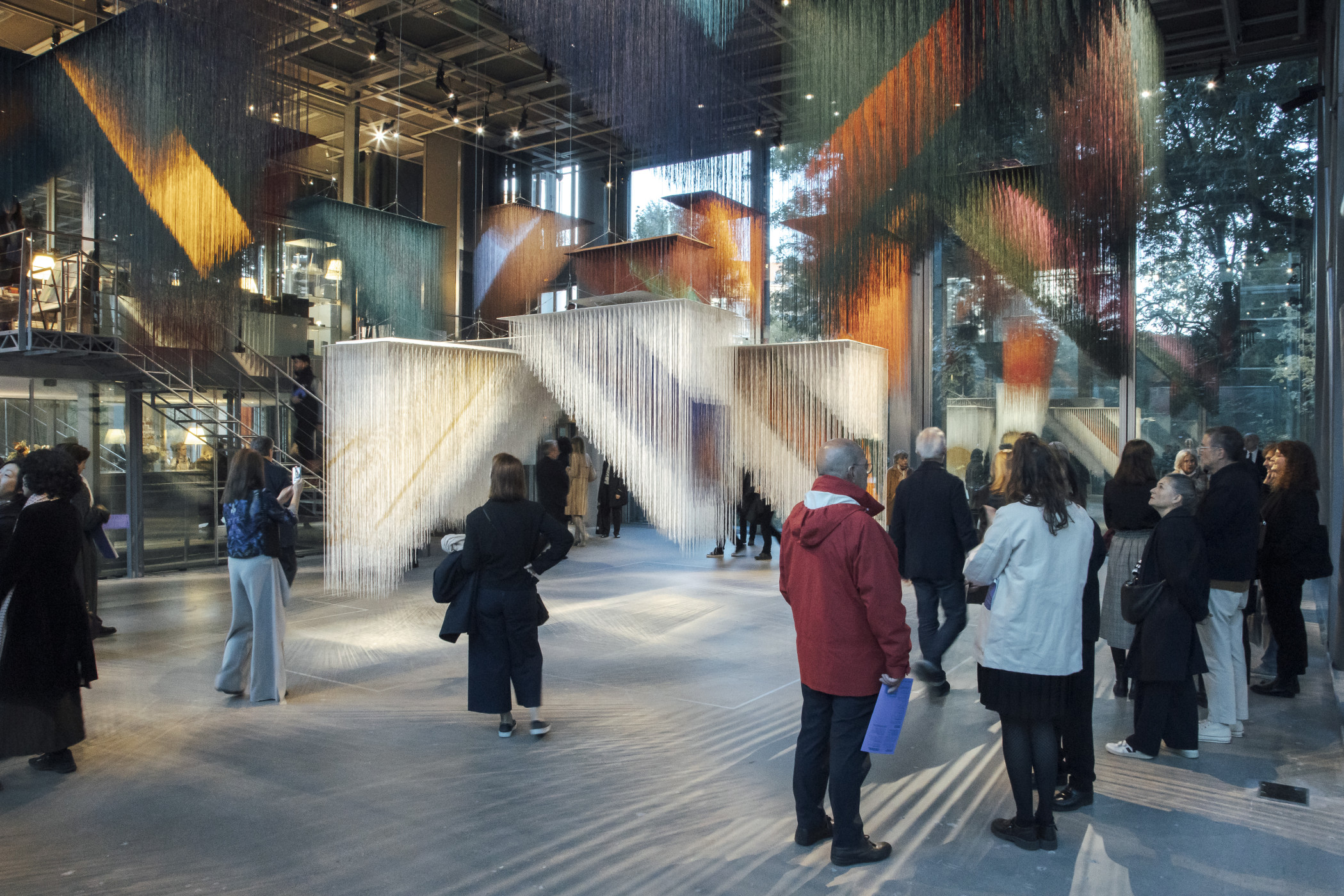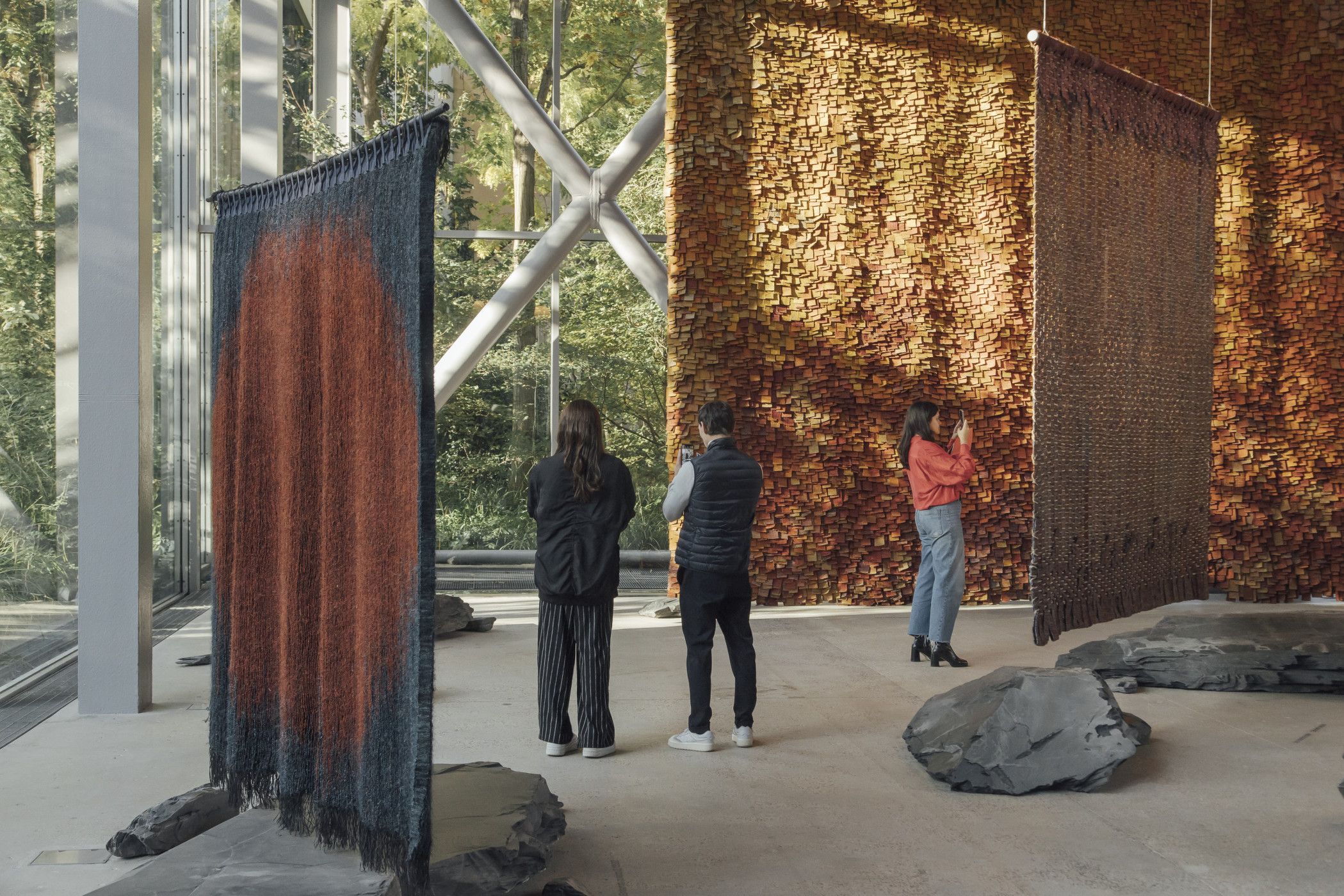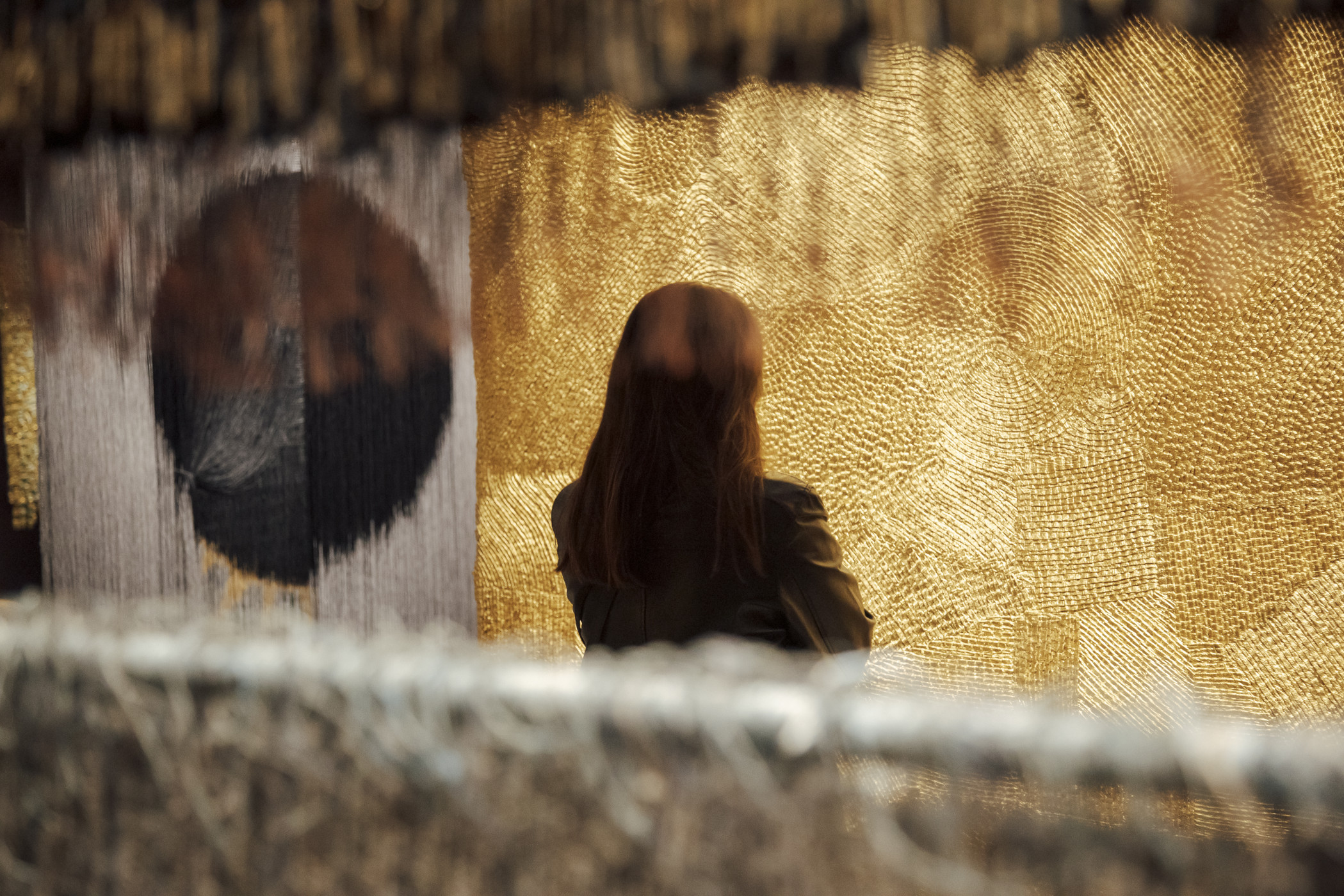
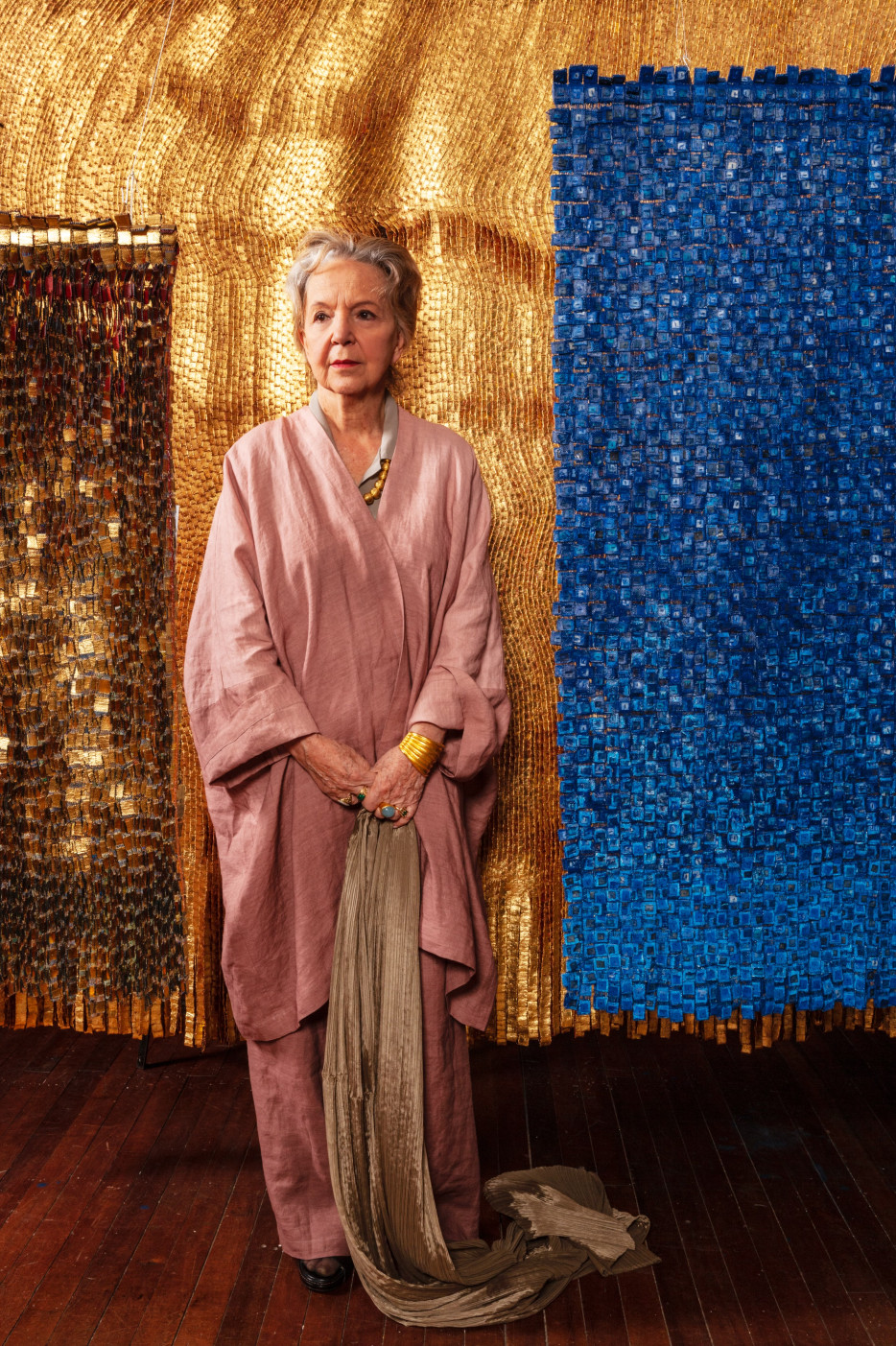
How to Weave a Whole Universe The Triumph of Textiles at the Paris Exhibit of Olga de Amaral
Paris’s Fondation Cartier pour l'art contemporain is hosting an exhibition dedicated to the contemporary Fiber Art pioneer, Columbian artist Olga de Amaral. This marks the first major retrospective of her work in Europe, offering an in-depth exploration of the essence of her corps d'œuvre for all to experience.
Olga de Amaral is not merely a classic; she is a living classic. The 92-year-old artist resides not far from Bogota, the city where she was born and began her studies. Her education was later completed at Michigan’s Cranbrook Academy of Art in 1955. There, she studied under the Finnish-American Modernist textile designer Marianne Strengell. Along with Anni Albers and Gunta Stölzl, who established the textile division of the Bauhaus school, Strengell contributed to advancing the art of tapestry, integrating it into the Modernist movement.
In the United States, de Amaral witnessed the height of mid-century modern, particularly abstract expressionism. She then traveled to Europe where she experienced the emergence of nouvelle tapisseie that was the beginning of contemporary Fine Art. Finally, she returned to Columbia, where she immersed herself in the art of pre-Columbian America and the crafts of Latin America. Her unique style emerged at the intersection of all these influences. But even today, this reasonable description of her aesthetic still conceals traces of a long-standing bias, which suggested that female artists who began working with textiles in the 1950s and 1960s turned to this “feminine” medium because they were excluded from the “real” art. In other words, if you failed to become a Rothko, a Pollock, or a Newman – welcome to the weaver’s loom. De Amaral’s retrospective in Paris is less about challenging this bias – Fiber Art has long established itself as a legitimate art form, and fibers have become one of the leading contemporary medium – and more about allowing viewers to appreciate both the significance of her choice of fibers and their broader meaning and place in art.
And this choice, so distinctly feminine, was significant for de Amaral precisely because of this quality – just like any other material, the fibers conveyed meaning inherently and independently.
The decorative inherent in various practices of traditional female crafts is no longer an issue. However, a single tapestry by de Amaral in the main project of the current Venice Biennale, which was devoted to the Global South, cannot achieve the same impact as two floors of her work, spanning from the 1970s to the 2010s, gathered under one roof in the space of the Fondation Cartier. The concentrated beauty of her work, perfectly reflected and amplified by the fondation’s space designed by Jean Nouvel and the surrounding garden, seems to overshadow all questions of meaning but, in truth, brings the said meaning to light.
Two floors of tapestries by Olga de Amaral leave no doubt that her primary focus is cosmogony. This theme is fully evident here and now at the exhibition in the Fondation Cartier, as it would be challenging to grasp its magnitude without such an extensive retrospective. True to the essence of cosmogony, her work is entirely dedicated to the emergence (or rebirth) of harmony from chaos. The tangle of fibers, the density and resilience of the goldleaf, the knots, and the thread breaks – all come together to give rise to clarity, serenity, and harmony.
In the hands of Olga de Amaral, the fibers and yarn are capable of representing vastly different states of matter. Below, the dark, windowless space hosts one of her best-known series, “Estelas” (Stars). The dense tapestries, covered with gesso and her signature goldleaf, appear to be fused into the space, creating an atmosphere of ominous stillness.
Above, in the expansive space with glass walls opening onto the garden, another renowned series, “Brumas” (Mists), is displayed. Vibrant fibers of varying lengths, arranged into geometric shapes, are suspended from the ceiling. As you move around, they reveal geometric figures in contrasting colours. Light filters through them, rendering them fluid and ever-changing.
To describe this universe woven by the hands of Olga de Amaral, one might employ poetic metaphors (just as she herself does when naming her series of works) and speak of stars, nebulas, and cosmic dust – or one might turn to mythology, evoking the magical Golden Fleece or Penelope, who weaves and unweaves her canvas, stretching time itself. Either way, the fibers serve as the medium through which de Amaral restores the balance of elements and shapes on her own woven universe.
Olga de Amaral
Fondation Cartier pour l'art contemporain until 16 of March, 2025
Courtesy: Fondation Cartier
Text: Editorial team


